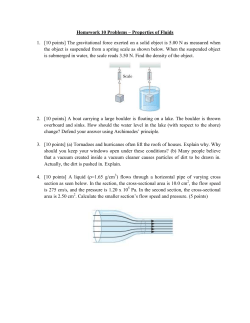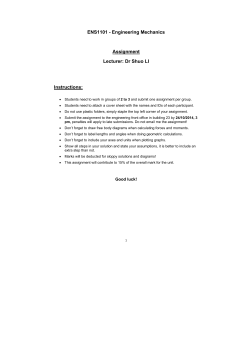
Zinc-Coated Ductile Iron Pipe
Zinc-Coated Ductile Iron Pipe AMERICAN is proud to introduce the latest advancement in corrosion control for iron pipe, zinc coating. Zinc has been used to effectively eliminate corrosion in iron pipe for more than 50 years. Internationally, this advanced coating system has been used to protect millions of feet of cast and ductile iron pipe in corrosive environments. AMERICAN began supplying zinc coating for our export orders starting in the early 1980s. Now, we’re pleased to offer this proven system to domestic markets. Zinc coating significantly extends the life of an already rugged and reliable product – ductile iron pipe. A Brief History of Zinc Coatings Zinc dust was first added to paints for corrosion control as early as 1837. Since then, zinc-rich paints have received widespread acceptance for metallic corrosion control around the world. The water industry first began using zinc coatings on iron pipe in Europe in 1955. As a result of zinc’s widespread use there, the ISO standards 8179 and BSEN 545/598 were both developed and widely adopted. Beginning in the early 1980s the mass of zinc applied to iron pipe was increased from the original 130 grams per square meter (g/m2) to the current 200 g/m2. This amount, with a protective topcoat, has proven optimal for life extension of iron pipe. Also, in the early 1980s, AMERICAN began supplying the zinc-rich ISO coatings on ductile iron pipe for our international orders. Key Dates in the Development of Zinc Coatings for Ductile Iron Pipe 1958 Zinc coating was first applied to cast iron pipe in Europe for corrosion protection. 1963 Standard bitumen/coal-tar paint was applied for normal environments in Europe. 1963 Polyethylene sleeve was recommended for soil resistivities of less than 400 ohm-centimeter by French pipe maker Pont-à-Mousson. 1972 Germany and Austria began to standardize the use of zinc coatings on iron pipe. 1982 AMERICAN supplied its first international order with a zinc coating. 1984 All ductile iron manufacturers in the United Kingdom started supplying all new ductile iron pipe in the diameter range 80 - 800mm with a zinc coating. 1984 Zinc spray of 130 g/m2 under bitumen paint became common in Europe. 1995 Zinc spray of 200 g/m2 under bitumen paint became the standard in Europe. Zinc Coatings for Iron Pipe Today The advances in zinc coatings over the past 60 years have resulted in a highly effective corrosion inhibiting product. According to the International Zinc Association, products coated with zinc “are slow to enter the recycling circuit due to the very nature of their durability. The life of zinc-containing products is variable and can range from 10-15 years for cars or household appliances, to over 100 years for zinc sheet used for roofing.” With a projected lifespan of well over 100 years, zinc coating on ductile iron pipe is the most effective and dependable way to further extend the lifespan of an already rugged and durable product. 11-9 A Specification for Zinc Coating on Ductile Iron Pipe A. Standards: Ductile iron pipe shall conform to AWWA C150 and C151, subject to the following supplemental requirements. The pipe shall be of the diameter and class shown, shall be furnished complete with rubber gaskets as indicated in the Contract Documents, and all specials and fittings shall be provided as required under the Contract Documents. The ductile iron pipe shall be manufactured or supplied by AMERICAN Ductile Iron Pipe or pre-approved equal. Joints shall conform to AWWA C111, cement linings to AWWA C104, fittings to AWWA C153 or C110. B. Markings: Upon request, the CONTRACTOR shall require the MANUFACTURER to legibly mark specials in accordance with a laying schedule and marking diagram. All other cast marks and other marks shall be in accordance with applicable Standards. C. Laying Lengths: Pipe laying lengths shall be provided in 20 foot nominal lengths with allowable trim pipe lengths in accordance with AWWA C151 and special shorter lengths provided as required by the Drawings. D. Joint Design: Ductile iron pipe shall be furnished with push-on joints or pushon restrained joints. Restrained joints shall be AMERICAN Fast-Grip, Flex-Ring, or Lok-Ring. E. Lining: Except otherwise provided herein, interior surfaces of all ductile iron pipe, fittings, and specials shall be cleaned and lined at the pipe casting facility with a standard thickness cement mortar lining applied in conformity with AWWA C104. A seal coat shall not be applied to the surface of the cement-mortar lining. F. Coating: The exterior of ductile iron pipe shall be coated with a layer of arcsprayed zinc per ISO 8179. The mass of the zinc applied shall be 200 g/m2 of pipe surface area. A finishing layer topcoat shall be applied to the zinc. The coating system shall conform in every respect to ISO 8179-1 “Ductile iron pipes - External zinc-based coating - Part 1: Metallic zinc with finishing layer. Second edition 200406-01.” G. Installation: Ductile iron pipe shall be loaded, transported, unloaded, installed, and tested in accordance with AWWA C600. 11-10 Zinc Coated Ductile Iron Pipe for Corrosion Control Zinc Basecoat V-Bio Polyethylene Encasement Asphaltic Topcoat Zinc is anodic to iron. That means iron is the more stable, more noble, of the two elements. Zinc will cathodically protect the iron pipe as long as zinc is present, and over time, will convert to zinc compounds that provide an enduring passivating layer under the topcoat, which protects the pipe against further corrosive attack. Zinc is an anode, uniformly adhered to the surface of the pipe. 11-11
© Copyright 2025









